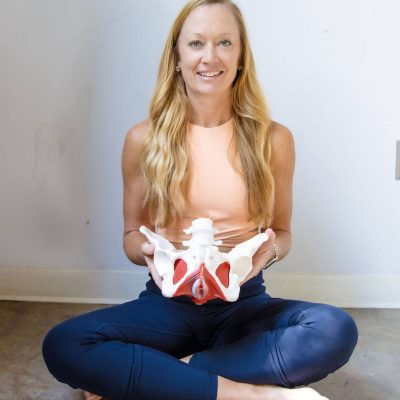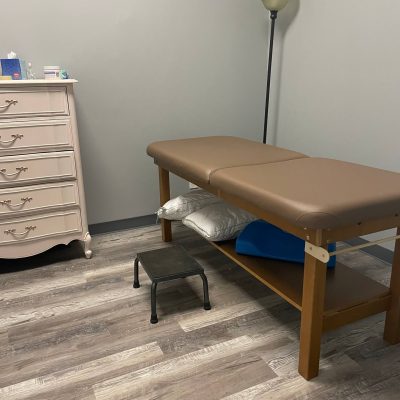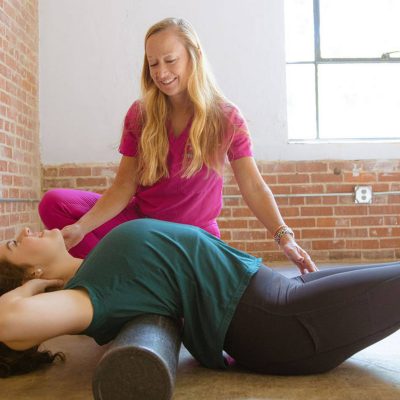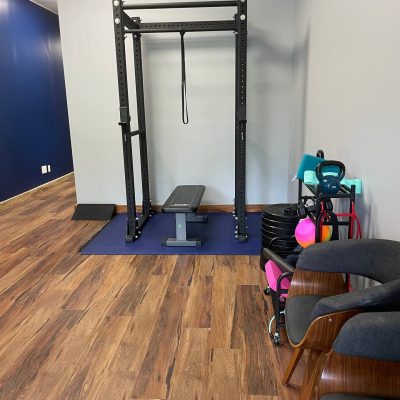By Samone Jackson, OTR/L, CLT
As a pelvic floor therapist, I’ve had the privilege of helping many women navigate their postpartum recovery. Childbirth is an incredible journey, but it also brings significant physical changes. One area that often needs attention, though not discussed enough, is the pelvic floor. This group of muscles, located at the base of the pelvis, plays a key role in bladder, bowel, and sexual function. Pregnancy and childbirth can put immense pressure on these muscles, leading to weakness, discomfort, and dysfunction. Fortunately, pelvic floor therapy can significantly speed up postpartum healing and help new mothers regain strength, comfort, and confidence.
Understanding the Pelvic Floor’s Role During and After Pregnancy
The pelvic floor serves as the foundation for our abdominal and pelvic organs. It acts like a hammock that supports the bladder, uterus, and bowel. During pregnancy, the weight of the baby, along with hormonal changes that loosen ligaments and muscles to prepare for birth, can weaken the pelvic floor. Vaginal deliveries, especially those involving tears or episiotomies, can stretch or damage these muscles even further.
This weakening can lead to several common postpartum issues, including:
- Urinary incontinence: Many new moms experience leakage when they cough, sneeze, or laugh. This is often due to pelvic floor weakness.
- Pelvic organ prolapse: This occurs when the pelvic organs (like the bladder or uterus) drop from their normal positions and press against the vaginal wall.
- Painful intercourse: Tension, scarring, or muscle imbalance in the pelvic floor can lead to discomfort or pain during sex after birth.
- Lower back pain: Weakness in the pelvic floor can contribute to poor posture and back discomfort.
These symptoms can range from mildly inconvenient to severely disruptive, affecting daily life and emotional well-being. The good news is that pelvic floor therapy is an effective, non-invasive way to address and alleviate these issues.
How Pelvic Floor Therapy Works
Pelvic floor therapy is a specialized branch of physical therapy designed to target the muscles and tissues of the pelvic region. A trained pelvic floor therapist will assess the condition of the pelvic muscles and create a customized treatment plan that addresses each individual’s specific needs.
Here are some key components of pelvic floor therapy in postpartum recovery:
- Assessment and Education
The first step is always a thorough evaluation. We assess the strength, tone, and flexibility of your pelvic floor muscles. This may include an internal exam to evaluate how well the muscles are functioning. We also discuss any symptoms you’re experiencing, such as pain, incontinence, or a feeling of heaviness or pressure in the pelvis. Education is an important part of therapy. Many women don’t realize that these symptoms are treatable, or that it’s not normal to just “deal with” them after having a baby. - Pelvic Floor Exercises
One of the most effective tools we use is a series of exercises designed to either strengthen or relax the pelvic floor muscles. For some women, the muscles are weak and need to be strengthened with exercises like Kegels, which involve contracting and lifting the pelvic floor. For others, the muscles may be too tight or overactive, and relaxation techniques such as diaphragmatic breathing or gentle stretches are needed to release tension. - Manual Therapy
Pelvic floor therapy often involves manual techniques to help restore muscle function. This could include internal or external massage, scar tissue mobilization (especially if you’ve had a tear or C-section), or trigger point release. These techniques help improve blood flow, release muscle tension, and promote healing. - Breathing and Core Strengthening
The pelvic floor doesn’t work in isolation; it functions as part of the core, which also includes the diaphragm, abdominal muscles, and lower back muscles. Breathing exercises that engage the diaphragm can enhance pelvic floor recovery, as they help to coordinate the entire core. As your recovery progresses, core exercises that gently engage your abdominal muscles will help stabilize your body, reduce back pain, and support your overall recovery. - Behavioral Modifications and Lifestyle Adjustments
Pelvic floor therapy often includes advice on how to modify everyday habits to reduce strain on the pelvic floor. For example, you may be taught proper techniques for lifting your baby or heavy objects, tips on bladder training to improve incontinence, or how to use posture to protect your back and pelvic area during recovery. These adjustments can make a significant difference in preventing future pelvic issues.
Why Pelvic Floor Therapy is Essential for Postpartum Healing
The body undergoes tremendous changes during pregnancy and childbirth, and expecting it to simply “bounce back” without proper rehabilitation is unrealistic. Pelvic floor therapy provides the focused care and recovery process that new mothers need but often don’t know they can access.
Some women may think pelvic floor therapy is only necessary if they have severe symptoms, but it can benefit all postpartum women—whether you’ve had a vaginal birth, C-section, or experienced no obvious complications. Addressing pelvic floor health early helps prevent future issues like chronic incontinence, prolapse, or pelvic pain, which may appear months or even years after childbirth.
By restoring strength, mobility, and function in the pelvic area, pelvic floor therapy empowers women to return to the activities they love—whether that’s chasing after their little ones, exercising, or enjoying intimacy again.
Conclusion
Postpartum recovery is about more than just bouncing back physically—it’s about healing your body and restoring your confidence. Pelvic floor therapy provides a safe, effective, and personalized approach to recovery. It not only addresses existing symptoms but helps prevent long-term issues, allowing new moms to fully embrace this new chapter of their lives with comfort and strength. If you’re navigating the postpartum period, I encourage you to consider pelvic floor therapy as part of your healing process. Your body deserves it.







